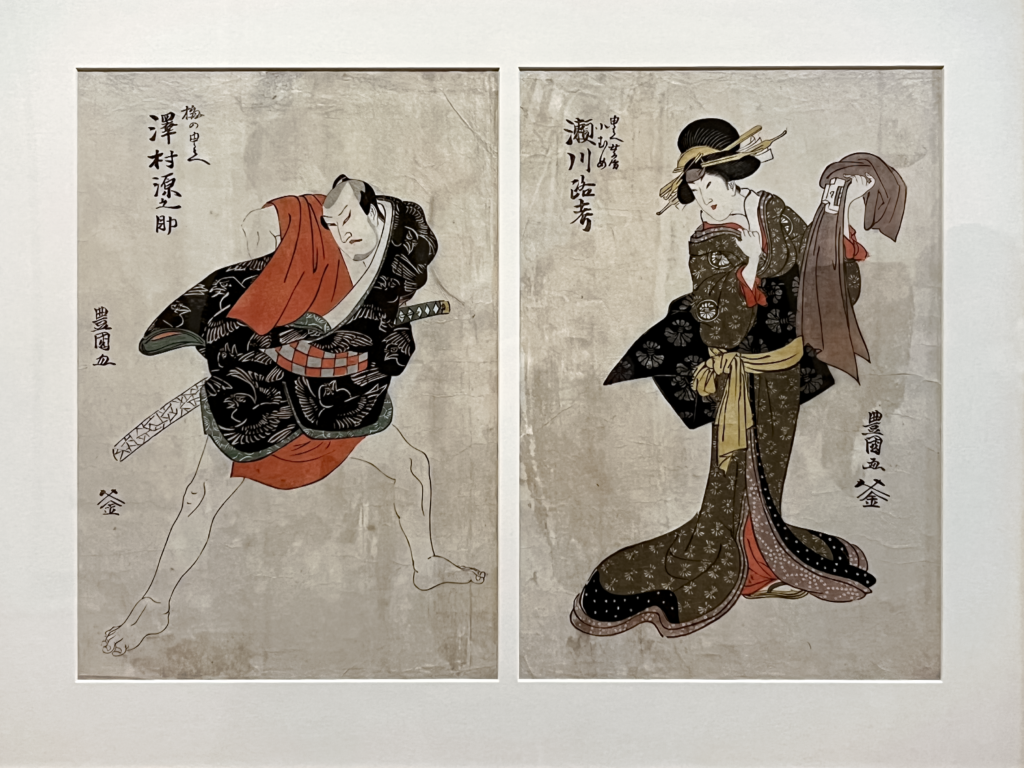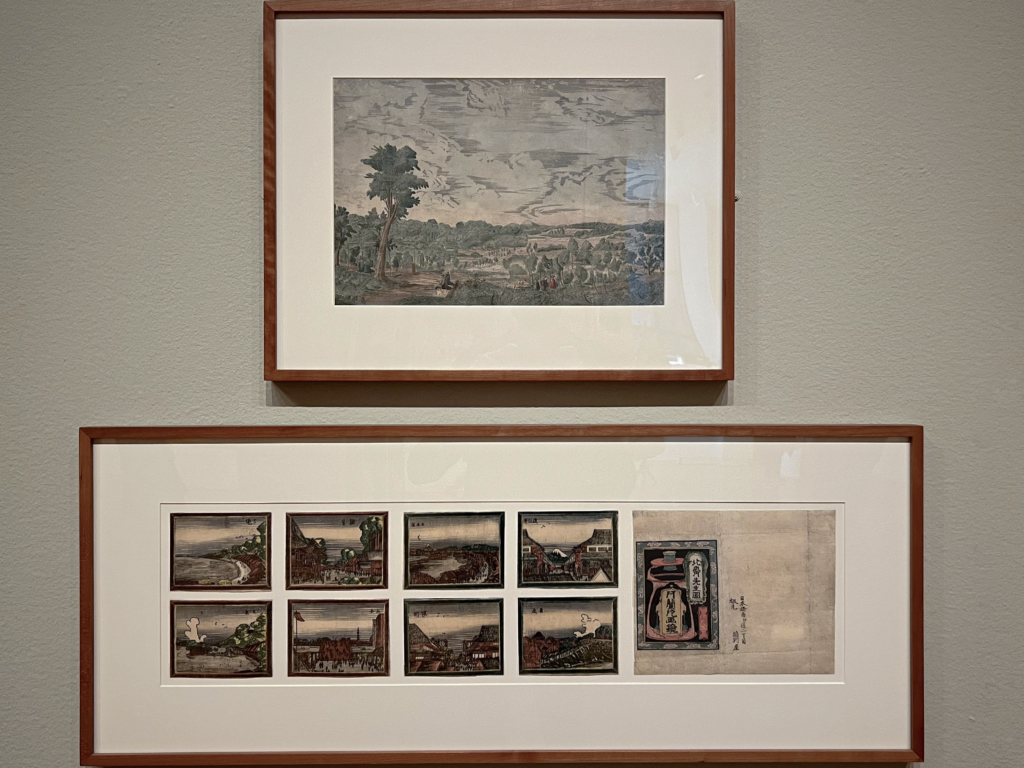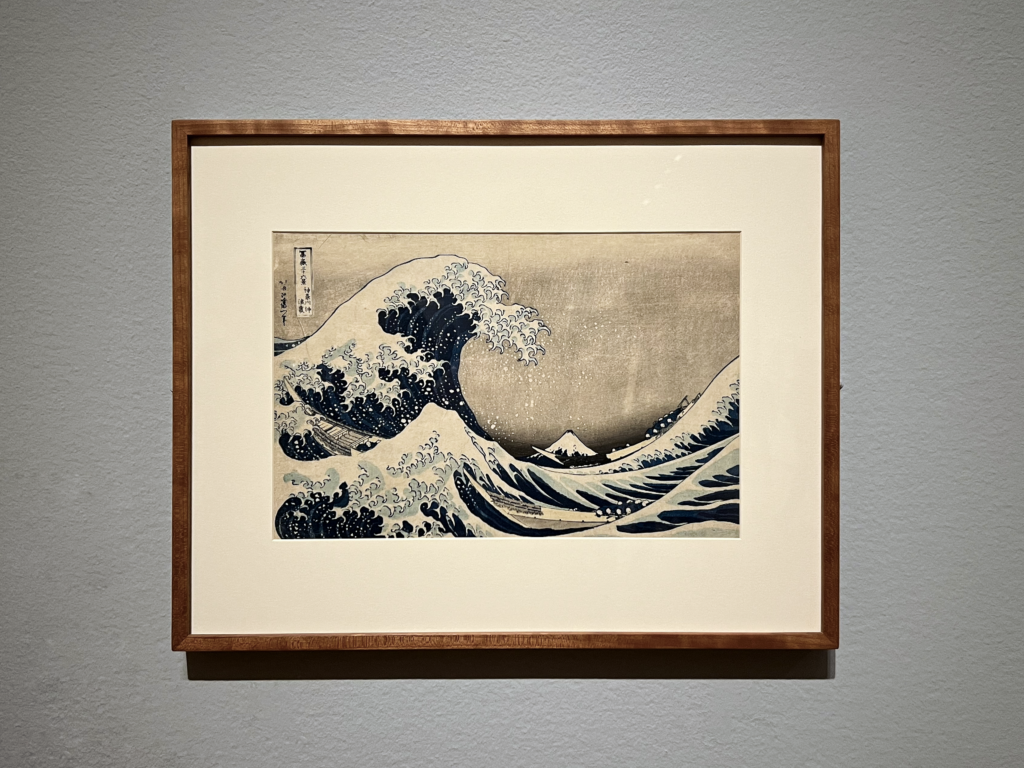Visiting Hokusai: Inspiration and Influence

It’s been a while!
Overall, I’d say that 2023 went well for my family and me. What could be a better way to celebrate the new year than by visiting the local Seattle Art Museum?
Originally, my family and I wanted to go see the comparative Renegade Edo and Paris exhibit, which equated the works of late 19th century French artist Henri de Toulouse-Lautrec to the woodblock prints of Edo-period Japan. However, this exhibit turned out to be at the Seattle Asian Art Museum and not the Seattle Art Museum. I like to say that when one door closes, another one opens. When searching for other exhibits to see at the Seattle Art Museum, we came across Hokusai: Inspiration and Influence. This exhibition was on loan from the Museum of Fine Arts in Boston and featured some of the legendary artist’s paintings, screens, woodblock prints, and masterpieces from his many students and contemporaries. To throw in a hint of foreshadowing, this exhibit was an academic clean slate for me. Going in, I knew almost nothing about Hokusai and Japanese art. Leaving, it had become one of my favorite museum exhibits of all time.
Katsushika Hokusai, most commonly known as just Hokusai, was one of the most influential Japanese artists of the Edo period, an idiosyncratic era of isolation and simultaneous social revolution. Saying that this guy is a big deal is an understatement. During his life, Hokusai produced over 30,000 works of art, easily making him one of the most prolific artists of all time. One of these works is The Great Wave of Kanagawa, which needs no explanation.
Hokusai belonged to a school of Japanese art called Ukiyo-e, or the “Pictures of the Floating World.” During this period, cosmopolitan life in Japan flourished. With a military hold on power, the nation’s hereditary nobility was cast aside to a purely ceremonial role. Due to this shake-up in hierarchy, a rise of merchant-based wealth gripped Japan, and the luxuries of city life quickly became available to anyone with reasonable means. In Edo, now Tokyo, the streets in designated districts were lined with vibrant cafes, rambunctious bars, dazzling theaters, and more commonly than all else… brothels. Using these wealthy districts as source material, Ukiyo-e artists imagined a world of style, extravagance, and wit, called the Floating World. The government of the time was socially conservative, but the people were not. The Ukiyo-e works produced were secretly inlayed with cues of romanticized naughtiness, hedonism, and transgression. However, Hokusai, one of the greatest artists of the Ukiyo-e school, would move beyond this intoxicating world of luxury later on in his life. Although his earlier years boasted the traditional media of Ukiyo-e, such as single-sheet landscape prints, flyers and prints of actors and courtesans, and greeting and announcement cards, his later works would include the famed Thirty-Six Views of Mt. Fuji. This stunning series of landscape prints differed dramatically from the spectrum of luxury and indulgence which characterized Ukiyo-e productions.
What are woodblock prints? During the Edo period, the wealth of Japan steadily shifted to the non-royal merchant class. To also control the Samurai class, the military dictator, or shogun, economically trapped them in the urban cores. They were given enough stipend to splurge on Edo’s luxuries whilst never being able to accumulate enough to leave. Over the decades, the Samurai had forgotten who they were and became fully hypnotized by the world represented in the Ukiyo-e. In this era of wealthy merchants and Samurai now addicted to the niceties of urban life, an industry of inexpensive artistic prints flourished. While original paintings were still reserved for the wealthy, woodblock prints proved to be an inexpensive and practical solution for the hordes of middle-class Japanese seeking to indulge in a share of Edo’s dazzling lifestyle. These woodblock prints, reused paintings printed onto wooden sheets, quickly expanded throughout all of Japan. These prints were easy to mass produce and inexpensive, allowing the works of Ukiyo-e artists to expand the glamour of the Floating World throughout Japan. In this time, the style of courtesans and kabuki artists proliferated as a universal symbol of beauty amongst the population. The world and influence of these woodblock prints would permeate from the mid-1700s all the way until the end of the modernist-Meiji Restoration in 1912.
This exhibit, Hokusai: Inspiration and Influence, was certifiable huge. As I walked past all the screens, prints, and cases, the rooms and halls of this exhibit seemed to form a never-ending maze. One section that particularly interested me was Hokusai’s Eight Views of Edo series. This series of woodblock prints were inspired by the copperplate prints of European art. As I inspected the works, I recalled learning from Japanese history how the Dutch were the only European power admitted into Japan during the Edo period. The Japanese and Europeans shared a vibrant trade relationship until Catholic missionaries decided to get involved. Out of defense and protest, Japan banned all European countries except for the Dutch, a Protestant country, from entering their territory ever again. During the Edo period (1603-1868) trace amounts of European knowledge still leaked into a closed-off Japan through the Dutch. Known as Dutch Learning, Japanese intellectuals poured over the material which came in from Europe. Although it was a small reference, I was fascinated to see how Dutch Learning permeated all throughout Japanese society at the time, including the world of art.

In one of the final rooms, I finally came across The Great Wave of Kanagawa itself. Or should I say, one of The Great Waves of Kanagawa. Although there were originally several thousand printed, only around 100 prints survive today. The Great Wave I saw was an authentic original, but it was not the true original. To be honest, the original work, if it survived, would be radically different from the other Great Waves of Kanagawa. The original paintings for woodblock prints were used simply as stencils in the production, and often degraded over time. Because the work was intended to be a mass-produced product, it’s acceptable for an original print of The Great Wave of Kanagawa to be considered a legitimate piece.

There was one more thing that really fascinated me in this exhibit. There was a mention on one of the informative signs that when released, The Great Wave was not received any more positively or notably than the works in the Thirty-Six Views of Mt. Fuji series. Yet, by the 1890s, French connoisseurs prized this work above all others in the series. I spent the final few minutes of my time in the exhibit pondering this thought. It’s curious how domestically The Great Wave was not originally particularly famous compared to the other thirty-five views of Mt. Fuji. In reality, it was the European collectors who built up the work’s perceived importance. When I first saw The Great Wave, I was surprised by how inconspicuous it was. Arguably, The Great Wave of Kanagawa shares a similar pedestal with the Mona Lisa in regard to notoriety, fame, and social media. Oddly though, the Mona Lisa has its own room while The Great Wave was simply crammed in next to some other pamphlets and screens. I first thought this was a weakness, however it soon turned out to be the exhibit’s greatest strength. The curators did not arrange the paintings relating to Europe’s foreign perception of value but rather to authentically describe Hokusai’s life and legacy. It was a very thoughtful end to a stunning exhibit.
I also learned later in the day that there’s nothing better than fish and chips and lobster bisque on a winter day. Okay, perhaps there are other things that are better (like hot chocolate) but trust me, go to the restaurant MARKET if you’re visiting the Seattle Art Museum!